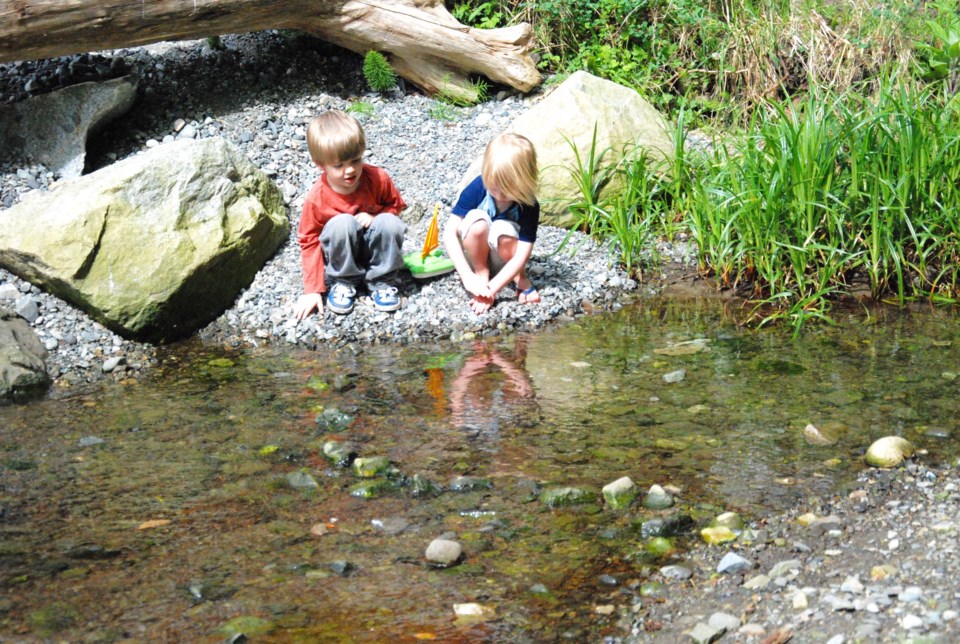The circle of life begins in Tunstall Bay
LOUISE LOK
Editor
In a moonlit event timed with the tides, three men gathered like midwives at a water birth, watching for tiny salmon fry to burst out of the narrow freshwater channel, to the sheltered bay for a new life in saltwater.
Mike von Zuben, Don McQueen, and Tim Pardee were on the beach, citizen scientists, who have spent endless hours in an effort to restore salmon to Explosives Creek. This night was their moment of truth. Between midnight and 1 a.m., the fresh water and saltwater would temporarily merge, allowing for a brief opportunity for salmon to continue with their cycle of life by breaking out to the sea.
“There was a small channel of water from the beach pool to the ocean about 3’ wide and 1’ deep beside the stump,” says Pardee. “We shoveled some gravel to make it a bit deeper.”
Pardee explains that Bowen Island Fish and Wildlife have been raising Chum from eggs at the hatchery, and had just last week released them into Explosives Creek above the culverts.
The group had to time the release with the ideal developmental stage of the baby fish, called “fry,” as well as a tide high enough to meet the channel. The channel stops short, unable to meet the ocean if the tide isn’t high.
Says Pardee, it “is important is that chum fry get to salt water within a few days or they will die.” On Friday, Pardee made notes of the situation on the beach. “The vast majority of the fry were still in the beach pool and the creek between the beach and the climbing pools. They don’t seem to be in a hurry to get to the ocean despite our attempt to ‘herd’ them toward the channel. I guess they’ll decide themselves when to go to salt water. Hopefully, otters, birds, and other predators won’t discover them before they make their escape.” His notes go on to say “The fortunate thing is that we have similar high tides (14.4 ft) for the next three days so there should be an open channel each night. Rather than being at Tunstall late at night during high tide, we can shovel gravel from the channel during the day and know that the fry will be able to get to the ocean at high tide. I’ll go there again this morning and shovel for a while.”
The dedication paid off. By Saturday night “most of the fry, “90% of the 25,000,” released into Explosives Creek had safely departed to the ocean. “Hopefully, all the rest will go to salt water at high tide over the next few nights,” says Pardee. The group has not had to work on the channel in the past, but a period of dry weather may have made a difference this year.
“This is the first year that the channel wasn’t naturally open to the sea. We were down here in our boots, shoveling away but It was easy. We didn’t mind.” He laughs about the idea of being a midwife for salmon fry. “It was good fun.” By the middle of the week, it appeared that all the salmon had made it to the sea.



